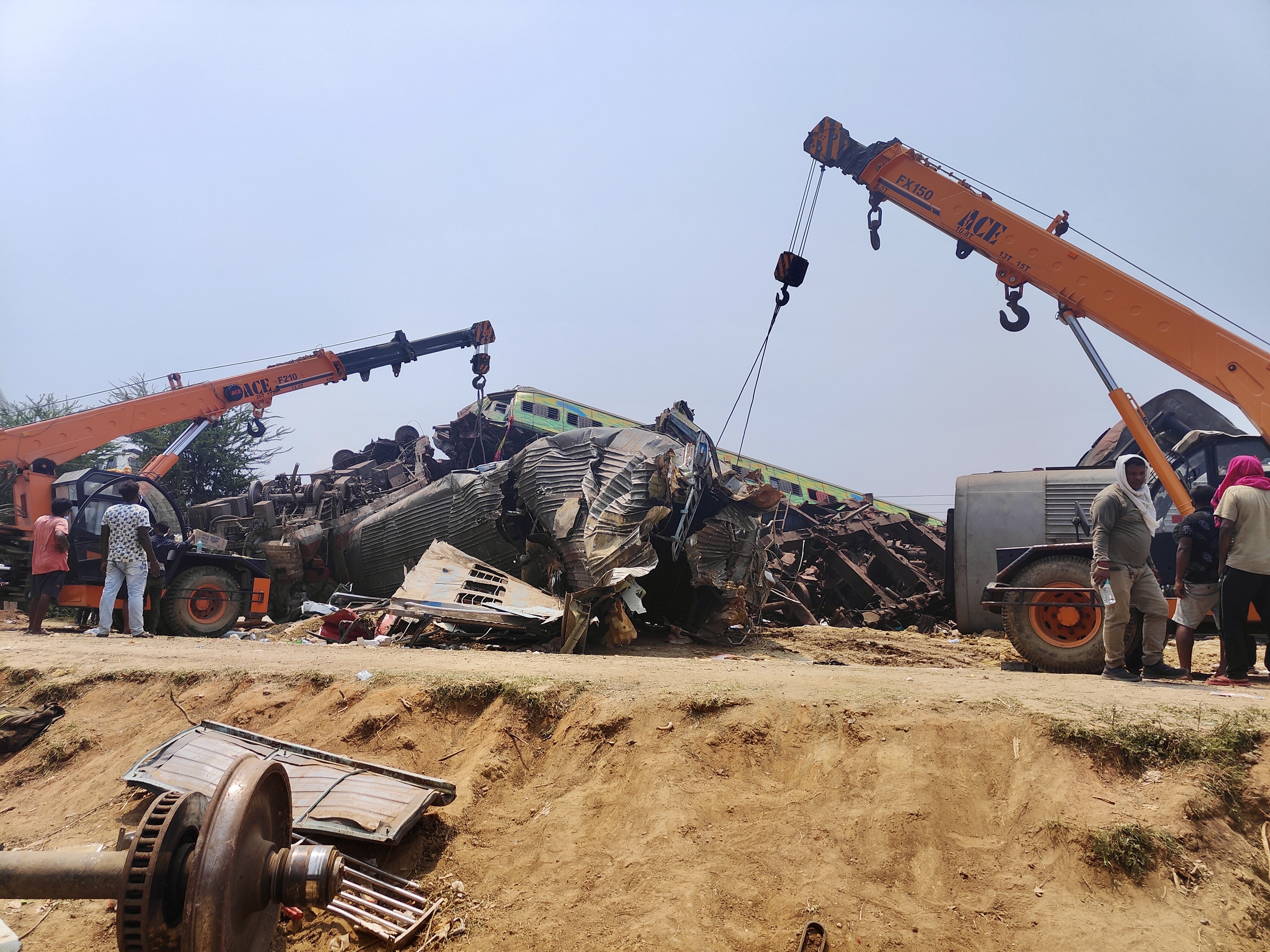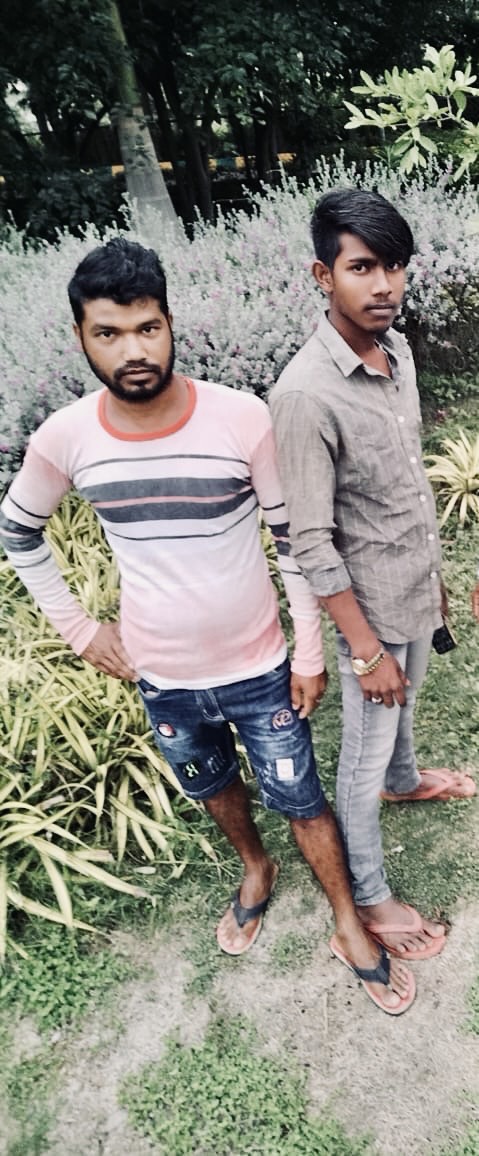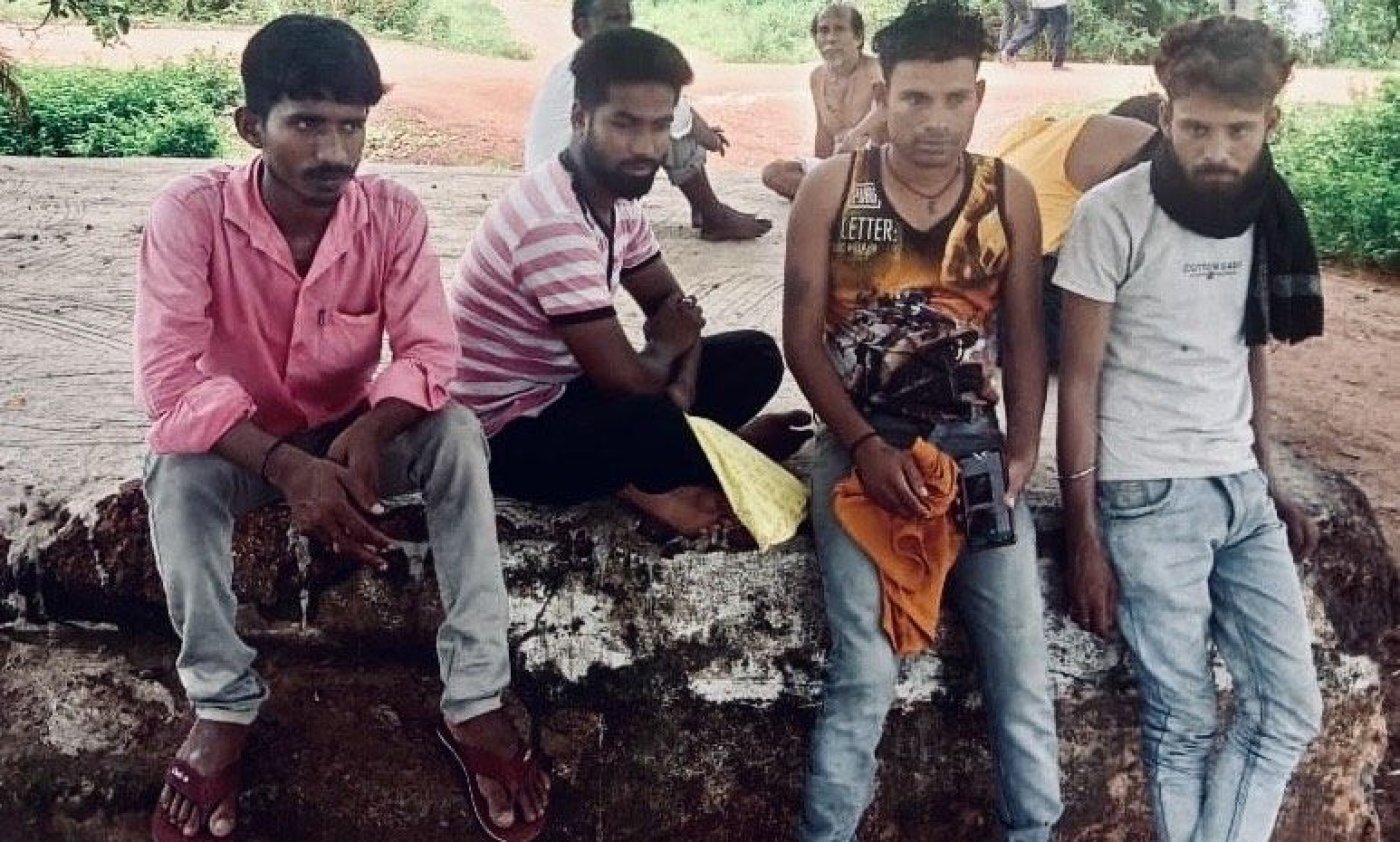Bhubaneswar: Instead of a hot and dusty construction site in Haryana, where he had planned to work in the summer, Ajit Kumar spent June in an air-conditioned dormitory of a private guesthouse in Odisha, paid for by the east coast railway, where he fielded calls from his grief-stricken family and waited to take his brother’s body home.
The 18-year-old from Tajpur village in Bihar’s Begusarai district came to Bhubaneswar on 2 June, a day after three trains collided in Balasore district, 200 km away, left 293 people dead and over 1000 injured.
Ajit’s 23-year-old brother, Sujit Kumar, was among the dead.
But days have turned into weeks, and Ajit, along with the families of 84 people, waited for the central government to carry out DNA testing to ascertain the identities of the deceased.
DNA samples have been taken from the dead and their kin by the All India Institute of Medical Sciences (AIIMS), Bhubaneswar and sent for matching to the Central Forensic Science Laboratory (CFSL) in Delhi.
Ajit’s wait ended on June 29, almost a month after he came to Bhubaneswar when 29 of the 81 unidentified bodies were identified based on DNA sampling, while 52 continued waiting, officials at AIIMS told Article 14.
As of 2 July, 19 of the 29 identified bodies were handed over to their families.

An Eternal Wait
DNA sampling was mandated after multiple families claimed single bodies or identification was difficult due to damaged faces.
In many cases, the bodies were accompanied by identity proofs like an Aadhar card, a driving license, or other belongings like a phone, bag, or other identifiable items. In other cases, there were no identity proofs or belongings, or they were misplaced, making it challenging to identify the victims.
For Ajit, however, the identification was simple.
“My brother was wearing my jeans and a belt. And the shirt was gifted to him by my sister-in-law,” he said, swiping through his phone, showing a happy selfie of Sujit and his wife wearing a red, black, and white checked shirt.
Ajit swiped to show another image on his phone screen: a lifeless body, a face beyond recognition, blood-stained clothes, assigned token number 32.
Pointing at the jeans and belts, Ajit said it was his brother. The victim’s bruised body had torn pieces of a shirt with red, black, and white checks.
Sujit Kumar, the eldest of four siblings, was returning to Chennai from his village to resume work as a labourer.
Ajit, who was supposed to accompany his brother to Chennai, had decided to work in Haryana, along with a friend, at the last minute.
Even as he was stung by sorrow, poverty didn’t allow Ajit much time to grieve or wait for weeks for his brother’s body. The teenager from Bihar was acutely aware of having lost out on the income of 20 days of work.
“We are two brothers and two sisters. I am the youngest. I have just started sharing my financial responsibilities at home. But this situation was unprecedented. I had to come and give my DNA sample. How could I leave without my brother when I was sure it was him,” he said.
The Moving Of Bodies
Hours after the accident occurred at around 7:00 pm on 2 June, bodies were shifted by the rescue personnel— made of the railway staff as well as state and central forces—to a high school in Bahanaga, two km from the accident site at Bahanaga Bazaar station in Balasore.
By the following day, when the death toll began to rise, the school and the hospital in the Balasore district had run out of capacity to keep the dead bodies. The bodies were then shifted to Bhubaneswar from Balasore and held at AIIMS and two private hospitals in the state capital.
AIIMS started receiving bodies from Balasore after 3.20 am on June 4, nearly 32 hours after the train crash. By the end of the day on June 4, AIIMS had received 123 bodies.
By June 7, the hospital had received 39 more bodies after an autopsy at Capital Hospital, one of the two private hospitals.
With a mortuary capacity of 33 at AIIMS, five containers were brought in from a seaport 100 km from Bhubaneswar to store and preserve the bodies. Each container has a capacity of 30-40 bodies.
After arriving at AIIMS, the bodies were embalmed with formalin and kept in an ice block or deep freezer.
The collection of DNA samples followed this.
“By the time bodies arrived at AIIMS, more than 12 hours had passed after their deaths,” a senior official from AIIMS, speaking on anonymity, said on June 27.
“The embalming and preservation process is 100 % effective within 12 hours of death.”
“Within the said time, if DNA is extracted, it also helps in yielding accurate results. If the body starts to decompose, then the process can be unfruitful. But we have sent samples from here and are now waiting for results from Delhi,” the official said.
The samples sent for testing from the bodies include teeth, bones, and hair.
“Since a considerable amount of time had already passed and some bodies had started decomposing, teeth are the most effective source of DNA,” said another official from AIIMS, speaking on the condition of anonymity.
A 2021 paper published by the US-based National Library of Medicine, says, “Teeth protect DNA from harsh environmental conditions as compared to other body parts and hence are important exhibits for DNA profiling from decomposed bodies.”
“The teeth are first cleaned if there are traces of tobacco. Then the tissue from the teeth is extracted. This entire process usually takes a day,” the official said.
Eighty-four blood samples from family members were collected and sent to Delhi, but these samples are not against all 81 bodies but half of them, according to AIIMS officials, speaking on 27 June. They said 40 bodies still haven't been claimed by anyone.
“There are bodies that have not been identified or claimed by anyone. If someone comes up to claim the bodies, we will send their samples for DNA testing,” an official said.
The Problem Of Multiple Claimants
The delay in sequencing is not just limited to challenges due to the decomposition of the bodies but also due to multiple claimants.
As per AIIMS officials, some bodies have been claimed by over ten different families.
If the sample testing ratio is 1:1, the DNA sequencing is done quickly, and the reports can be expected within ten days. But officials said multiple DNA sequences, with a ratio of 1:10, have complicated the sampling and delayed the procedure. The person's identification can be ascertained if the samples match more than 50 %.
The case of identifying bodies was more straightforward with verified identity proofs like an Aadhar card or a driving license. In the case of bodies with no identity proofs, the identification had to be done cautiously, a Bhubaneswar Municipal Corporation (BMC) official said on 27 June, speaking on the condition of anonymity.
“In the very beginning, there were claims verified to be false. So we must tread with caution. This is an extremely sensitive case,” said the official. “Because there is no other proof of identity, we must give the benefit of the doubt to whoever claims a body and proceed with DNA testing. That is what we have been doing.”
“In an ideal laboratory environment, sequencing of DNA takes three to five days, depending upon the quality and quantity of biological evidence,” said Vivek Singh, a forensic expert from the Indian Forensic Organisation (IFO) Forensic Standards & Research. “However, in cases of mass disaster, it can take longer time.”
Two More Brothers
Subodh Kumar, a 31-year-old agricultural labourer, travelled from Sondiya village in the Purnea district of Bihar to take his youngest brother, 21-year-old Suraj Kumar, body home.
For the first time, Suraj left home to work as a contractual labourer at construction sites in a different state, Tamil Nadu, 2000 km from his native village.
Hours before the accident, Suraj had posted a photo of himself and other young men from his village on his family WhatsApp group.
Wearing a yellow shirt and blue jeans, seated on a bench at the railway station, Suraj was smiling in the photo.
Subodh Kumar could identify his brother from the shreds of the blood-stained yellow shirt.
“Most of the bodies were beyond recognition. But this body had the same shirt my brother was wearing when he boarded the train,” said Subodh, speaking on June 24. “The height and body structure are a match too. But the face is not recognisable. There were no other proofs of his identity on his body. But I know in my heart that it's my brother.”
“I want to take him home. My parents are inconsolable. They want to see him one last time and wish to bid goodbye. He was the youngest and most loved,” he said. “The pain and agony increase every day.”
Of the four people who had left Sondiya village for Chennai, one escaped with minor injuries. Only one person of the three dead has been identified, while the families of two others were waiting for DNA reports last week.
While many remaining are confident that the body they have claimed belongs to a family member, they have no answers to give their families back home.
Each call evinces further despair.

Waiting In Grief
Sadam Hussain, a 33-year-old native of the north Dinajpur district in West Bengal, said that when he arrived in Bhubaneswar on June 4 to recover his brother Anzar-Ul-Haq’s body, he was told that the DNA report would be available in the next four days, but the dates kept shifting.
“My family calls me at least five times a day, asking me if there is any update. But what do I tell them? We have a helpdesk number, but they do not have an answer either,” said Hussain, speaking on June 24.
Anzar, 36, returning to Dinjapur from Bengaluru, where he worked on a construction site, has left behind his wife and three kids, aged 2, 4, and 6.
Less than 30 minutes before the accident, Anzar had called up his wife and excitedly talked about meeting her and the children after almost six months. Later that night, she received a call from his contractor informing them about the accident.
Sadam has identified a body based on the hair and half-face that he saw in the mortuary at AIIMS.
On June 4, as the death toll had started to rise and distressed family members had arrived in Balasore looking for their family members, the Odisha state govt had set up identification desks to identify those who died.
“The Images On Display Were Extremely Unsettling”
A large LED screen was set up, which displayed images of bodies recovered from the accident site. Belongings accompanied the photos, some with identity cards with a unique identification number assigned to them. There were also independent photographs arranged on a desk for identification.
The same images were displayed at Balasore's North Orissa Chamber of Commerce and Industry (NOCCI). NOCCI is a 40 thousand-square-foot exhibition ground which hosts big industry meetings. It was turned into a mortuary after the death toll increased.
The dead bodies were eventually shifted to AIIMs. At AIIMS, too, a similar LED display was arranged.
“The images on display were extremely unsettling. My hands shivered as I kept hoping that none would be my brother. But the truth is, I had not found him alive anywhere else either. Not in the hospitals here or in Balasore,” he said.
“I went through the images again and again and found one. Half the face was smashed, but the other half resembled my brother. The hair is exactly how my brother keeps it. We weren't sure what he was wearing,” he said. “But that same body was claimed by someone else too, who identified him based on his clothes and claimed him to be their family member, and now I am here waiting to get the reports.”
The Cost Of Grief
The month-long delay in identifying the deceased has affected the work and income prospects of those waiting, as most families depend on daily wage work to earn a living.
Even though their lodging, food, and travel to and from their native place were being taken care of by the eastern coast railway, many families could no longer afford the loss of income and went back home.
As of July 1, 22 remained.
Shiv Charan Das, who works at construction sites in Kerala, earning Rs 600 a day, arrived in Bhubaneswar on 4 June to find his 21-year-old brother, Krishna Ravi Das, who did the same.
They were to meet at their village, Harishchandrapur, in the Malda district of West Bengal, for their youngest sister’s wedding on June 10.
“My sister had given us a long list of items she wanted us to buy for her. We were excited. My brother had bought many gifts for her,” said Das. “I was supposed to reach home two days before the wedding. Krishna had decided to reach home earlier.”
Explaining why it was difficult for him to wait much longer, the 28-year-old said that he had taken a small loan for his sister’s wedding and needed to continue his work to repay it on time.
“I have been away for a long time, and I hope the reports arrive soon,” he said, speaking on June 24.
Three Trips In 25 Days
Some family members have also made multiple trips to Bhubaneswar from their native states, mostly Bihar and West Bengal, hoping to hear from the authorities.
Surendra Paswan, waiting to collect his brother Yogendra Paswan’s body, said he gave a DNA sample for testing on 7 June and was told the DNA report would arrive within a week.
When Paswan, a 39-year-old native of Bari Ballia village of Bihar’s Begusari district village, who works at a roadside hotel, made the 800 km journey on 14 June, the report was still not ready.
“I went home again because I could not be away from work for so long. I have a family of six to feed,” said Paswan, speaking on 24 June.
After a village leader insisted he goes again, this time with his sister-in-law and nephew, Surendra made the trip with them for the third time on 22 June.
“But the reports are still awaited, and I do not know when the report will arrive,” he said.
Editor’s note: As of 2 July 2023, Subodh Kumar, Sadam Hussain, Shiv Charan Das and Surendra Paswan are still waiting to collect the bodies of their loved ones.
(Aishwarya Mohanty is an independent journalist based in Bhubaneswar, Odisha. She writes on gender, rural issues, social justice and the environment. Previously she worked with Indian Express.)
Get exclusive access to new databases, expert analyses, weekly newsletters, book excerpts and new ideas on democracy, law and society in India. Subscribe to Article 14.

